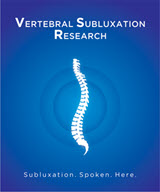New Research on Coordination & Balance in Kids

CLICK HERE to review the research
“Research is revealing that there is a relationship between abnormalities in the spine, the nervous system and brain” stated Dr. Matthew McCoy, a chiropractor, public health researcher and editor of the journal that published the study. “Basic science research shows that the proper functioning of the brain relies on proper structure and movement of the spine from an early age.”
Research has shown not only that the brain relies on normal structural integrity and joint movement, but that complex neurological communication and pathways involved in helping humans balance and orient themselves in space are tied into spinal biomechanics and their related neurological pathways.
“It makes perfect sense when you think about it” stated Dr. McCoy. “Coordination and balance disorders may be related to how the entire body communicates with the brain and the most critical area for this is the spine.”
According to McCoy “People’s nervous systems need the constant stimulation of movement in order to develop and function properly. Abnormal position or movement of the spinal vertebra can develop and this can lead to nerve interference. It is this interference, called vertebral subluxations, that chiropractors correct.”
According to researchers the nervous system controls and coordinates all functions of the body and structural shifts in the spine can occur that obstruct the nerves and interfere with their function. By removing the structural shifts, chiropractic improves nerve supply and function.
The parents of the 9-year-old boy reported on in this study were concerned that he had scoliosis as his previous x-rays and MRI showed several malformations. His medical care team had recommended surgery. He was developmentally delayed and had Klippel-Feil syndrome. He had trouble reaching his developmental milestones. Even at age nine he still could not hop on one leg. His inability to perform coordinated functions impacted his daily activities at home and school ultimately impacting his self-confidence.
The chiropractor examined him and found structural shifts in his head, neck, upper back, and low back. Restrictions and muscle tightness were also noted in his neck and low back. Balance assessments and other testing showed abnormalities. X-rays also showed several malformations consistent with Klippel-Feil syndrome. These structural shifts can lead to obstruction of the nerves and it is this obstruction, called vertebral subluxations, that chiropractors correct.
Following chiropractic care, he experienced improvement in balance and coordination especially in his daily activities at home and school. This also led to improvement in his self-confidence and social skills.
The study’s author called for additional research to investigate the clinical implications of chiropractic in this population.
Contact Information:
Matthew McCoy DC, MPH
Journal of Pediatric, Maternal & Family Health – Chiropractic
http://www.chiropracticpediatricresearch.com
support@vertebralsubluxationresearch.com

Research News
- The 19th International Research and Philosophy Symposium (IRAPS): Bridging Philosophy, Science, and Practice in Chiropractic
- New Study Uncovers the Broad Systemic Benefits of Chiropractic Care on Nervous, Endocrine, and Immune Systems
- The Hidden Power of the Spine: How Vertebral Subluxation Impacts Health Through Systems Biology
- New Study Sheds Light on Vertebral Subluxation and Systems Biology
- Understanding Cervical Spine Movement and Motor Vehicle Accidents













